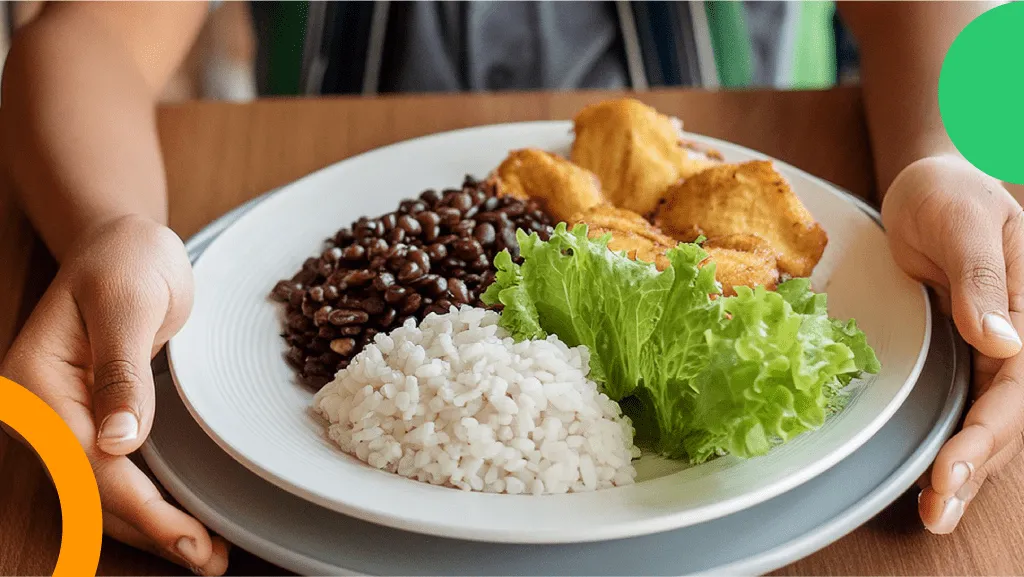The International Day of Awareness of Food Loss and Waste, celebrated on September 29, is not just another date on the calendar but an invitation to action. On this day, both governments and businesses are called upon to do their part in the fight against food waste.
In a world where an increasing number of people suffer from hunger and tons of food are discarded, it is crucial to avoid waste. In Brazil, according to IBGE data, about 30% of the country’s food production ends up being thrown away, equivalent to about 46 million tons of food per year, making it the 10th country in the waste ranking. Therefore, now more than ever, we must rethink how we produce, consume, and discard our food in a more responsible and sustainable way.
So, in celebration of the day, in this blog post, we will share 6 practical tips to help reduce food waste in our daily lives. Together, we can make a difference and create a more sustainable world where every meal matters.

1. Use food in its entirety
Using food in its entirety plays a crucial role in the battle against waste. You can be creative in using these resources, such as turning them into juices, soups, teas, and dishes using the peels and stems of fruits and vegetables.
Another way to ensure the full use of food is by reusing leftovers, such as using leftover meat in snack preparation or transforming vegetables and grains into salads, patties, or sautéed dishes. By using food leftovers, we not only reduce waste but also save money and time in the meal preparation process.
Optimizing the full use of food represents an exceptional strategy in waste reduction. By using all parts of food and reusing leftovers, we contribute to waste reduction and promote sustainability in food consumption.
2. Don’t judge food by appearance
To avoid food waste, it is essential not to judge them by their appearance, especially when it comes to leftovers or fresh produce that may seem a bit wilted. Often, the only difference is on the surface, with small changes in color or texture. Sometimes, a simple bruise on a fruit or vegetable can lead to the decision to discard it entirely. However, it is important to remember that, in most cases, cutting away the damaged part is enough to enjoy the rest of the food. This practice not only reduces waste but also contributes to more sustainable and economical eating. Giving “imperfect” foods a chance can make a big difference in this fight.
3. Make a shopping list
One of the most effective and easy strategies to reduce food waste is to make a shopping list and acquire only the essentials for your school (or your trip to the market). Planning according to the per capita of food is essential, and the Intelligent School Feeding (AEI) resource is valuable for school nutritionists. It not only helps save time and streamline shopping organization but also provides a shopping list that significantly reduces the chance of overbuying and wasting stocked food.
In addition, by focusing on the essential, you not only save money but also benefit the environment. Therefore, making a shopping list is a simple, accessible, and powerful practice that contributes to the reduction of food loss.
4. Store food properly
Properly storing food is essential to maximize its nutritional value and prevent waste. By immediately storing unused food in suitable and tightly closed containers, you can preserve its quality and extend its shelf life. This prevents food from spoiling prematurely, ensuring that it is consumed before being discarded. Additionally, proper food storage facilitates meal planning, allowing for the use of leftovers and avoiding unnecessary purchases, contributing to more conscious consumption.
5. Organize by expiration date
By organizing food in the pantry or stock with the expiration date in ascending order, placing items closest to expiration at the front, it becomes easier to identify and use those that are nearing their expiration date. This way, it prevents food from being forgotten and ultimately discarded.
Moreover, it is essential to read labels and understand how long foods can stay in the refrigerator after being opened. Foods often have specific instructions on storage time, so following this guidance is crucial to avoid products spoiling before consumption. Through this practice, meal planning becomes more efficient.
6. Plan menus in advance
Planning menus weekly is a great strategy that provides a clearer view of the necessary ingredients, avoiding excessive purchases and food waste. By defining a weekly menu, ingredients can be used more efficiently, and leftovers can be better utilized.
Furthermore, planning menus brings benefits such as ease of shopping organization, time savings in meal preparation, promotion of healthier eating, among others.
Bonus tip: Use AEI
If you deal with school meals, using AEI (Intelligent School Feeding) is the solution to assist you. The software offers a range of features and functionalities that aid in efficient stock management, creation of balanced menus, recipe cards, and has a direct impact on reducing food waste.
With AEI, you can create menus considering the nutritional needs of students and respecting dietary restrictions. Additionally, the software allows detailed tracking of food stock, ensuring better planning of purchases and avoiding shortages or excesses of food.
To learn more about the solution that transforms school meals daily, click here.








